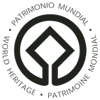 |
UNESCO World Heritage for Argentina |
 |
|---|
UNESCO World Heritage Sites represent some of the best natural, cultural and historic attractions in world travel. Below are details of the 10 cultural, natural and mixed sites inscribed for Argentina to date (a red World Heritage symbol denotes a site currently regarded as endangered). For more details of these properties, click on the links to the UNESCO website and the photographic galleries of these sites from OurPlace (where available) or see our highlights of Argentina for descriptions. Also, check out UNESCO's Intangible Cultural Heritage for Argentina below.
 | 1981 - Los Glaciares | Natural site |
 |
|---|---|---|---|
 | 1983 - Jesuit Missions of the Guaranis: San Ignacio Mini, Santa Ana, Nuestra Señora de Loreto and Santa Maria Mayor (Argentina), Ruins of Sao Miguel das Missoes (Brazil) | Cultural site | |
 | 1984 - Iguazu National Park | Natural site |
 |
 | 1999 - Península Valdés | Natural site | |
 | 1999 - Cueva de las Manos, Río Pinturas | Cultural site | |
 | 2000 - Ischigualasto / Talampaya Natural Parks | Natural site | |
 | 2000 - Jesuit Block and Estancias of Córdoba | Cultural site | |
 | 2003 - Quebrada de Humahuaca | Cultural site | |
 | 2014 - Qhapaq Ñan, Andean Road System | Cultural site | |
 | 2016 - The Architectural Work of Le Corbusier, an Outstanding Contribution to the Modern Movement | Cultural site |
 Los Glaciares |  Jesuit Missions of the Guaranis: San Ignacio Mini, Santa Ana, Nuestra Señora de Loreto and Santa Maria Mayor (Argentina), Ruins of Sao Miguel das Missoes (Brazil) |  Iguazu National Park |  Cueva de las Manos, Río Pinturas |

Intangible Cultural Heritage
Recently UNESCO has begun to document the world's Intangible Cultural Heritage which includes "traditions or living expressions inherited from our ancestors and passed on to our descendants, such as oral traditions, performing arts, social practices, rituals, festive events, knowledge and practices concerning nature and the universe or the knowledge and skills to produce traditional crafts". The current listings for Argentina are shown below - click on the links for more details.
Representative List of the Intangible Cultural Heritage of Humanity
 | 2009 - Tango |
|---|

